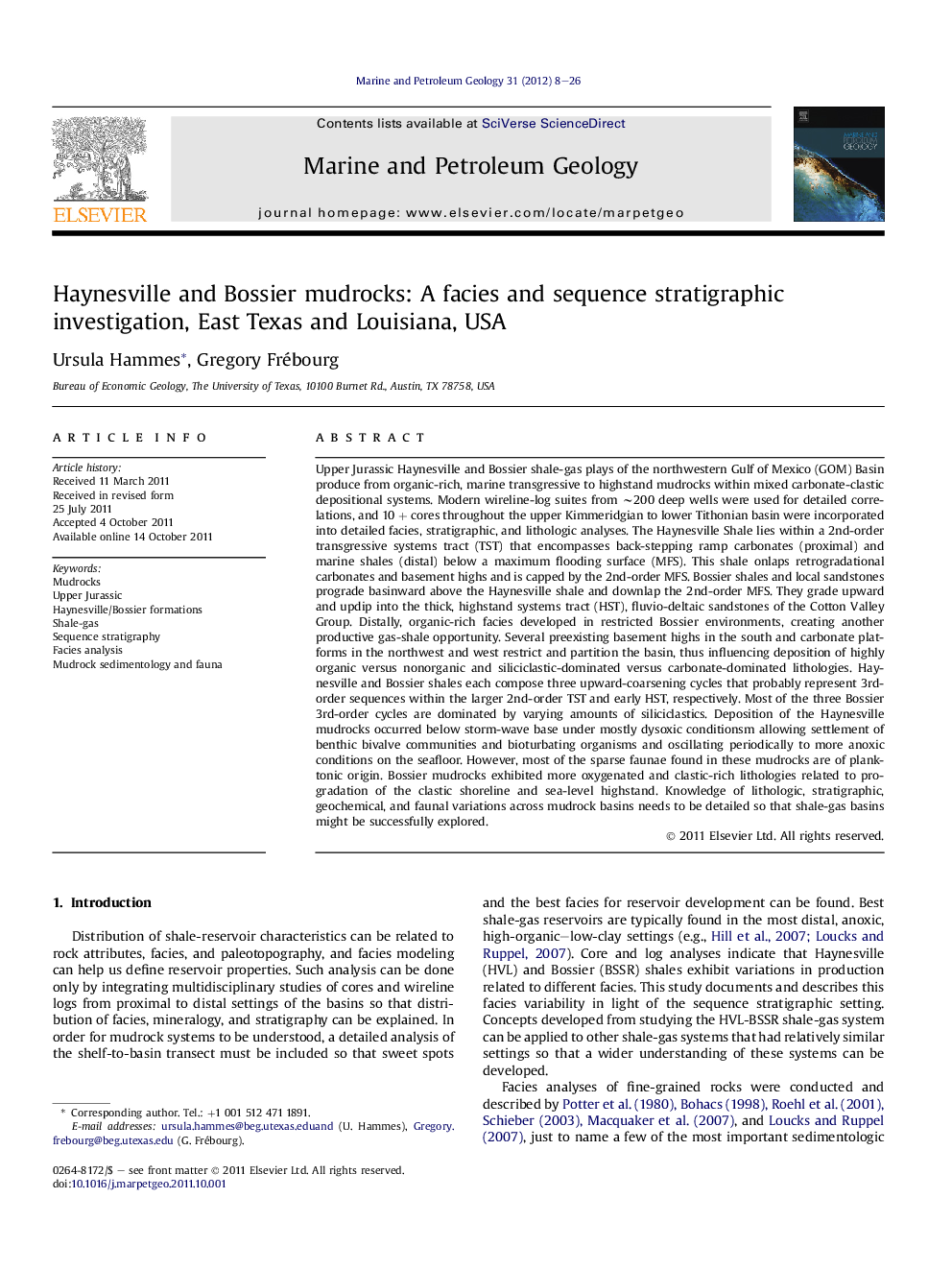| Article ID | Journal | Published Year | Pages | File Type |
|---|---|---|---|---|
| 4695932 | Marine and Petroleum Geology | 2012 | 19 Pages |
Upper Jurassic Haynesville and Bossier shale-gas plays of the northwestern Gulf of Mexico (GOM) Basin produce from organic-rich, marine transgressive to highstand mudrocks within mixed carbonate-clastic depositional systems. Modern wireline-log suites from ∼200 deep wells were used for detailed correlations, and 10 + cores throughout the upper Kimmeridgian to lower Tithonian basin were incorporated into detailed facies, stratigraphic, and lithologic analyses. The Haynesville Shale lies within a 2nd-order transgressive systems tract (TST) that encompasses back-stepping ramp carbonates (proximal) and marine shales (distal) below a maximum flooding surface (MFS). This shale onlaps retrogradational carbonates and basement highs and is capped by the 2nd-order MFS. Bossier shales and local sandstones prograde basinward above the Haynesville shale and downlap the 2nd-order MFS. They grade upward and updip into the thick, highstand systems tract (HST), fluvio-deltaic sandstones of the Cotton Valley Group. Distally, organic-rich facies developed in restricted Bossier environments, creating another productive gas-shale opportunity. Several preexisting basement highs in the south and carbonate platforms in the northwest and west restrict and partition the basin, thus influencing deposition of highly organic versus nonorganic and siliciclastic-dominated versus carbonate-dominated lithologies. Haynesville and Bossier shales each compose three upward-coarsening cycles that probably represent 3rd-order sequences within the larger 2nd-order TST and early HST, respectively. Most of the three Bossier 3rd-order cycles are dominated by varying amounts of siliciclastics. Deposition of the Haynesville mudrocks occurred below storm-wave base under mostly dysoxic conditionsm allowing settlement of benthic bivalve communities and bioturbating organisms and oscillating periodically to more anoxic conditions on the seafloor. However, most of the sparse faunae found in these mudrocks are of planktonic origin. Bossier mudrocks exhibited more oxygenated and clastic-rich lithologies related to progradation of the clastic shoreline and sea-level highstand. Knowledge of lithologic, stratigraphic, geochemical, and faunal variations across mudrock basins needs to be detailed so that shale-gas basins might be successfully explored.
► Fauna, grain, geochemical, and stratigraphic data were integrated to delineate mudrock facies. ► 3 main facies types characterizing the Haynesville and Bossier shales were issued. ► Paleogeomorphology and syndepositional tectonics influenced this mudrock system’s deposition. ► Organic-rich mudrock facies is linked to highly productive intervals in this study. ► 2nd- and 3rd-order transgressions yield the most organic-rich intervals.
